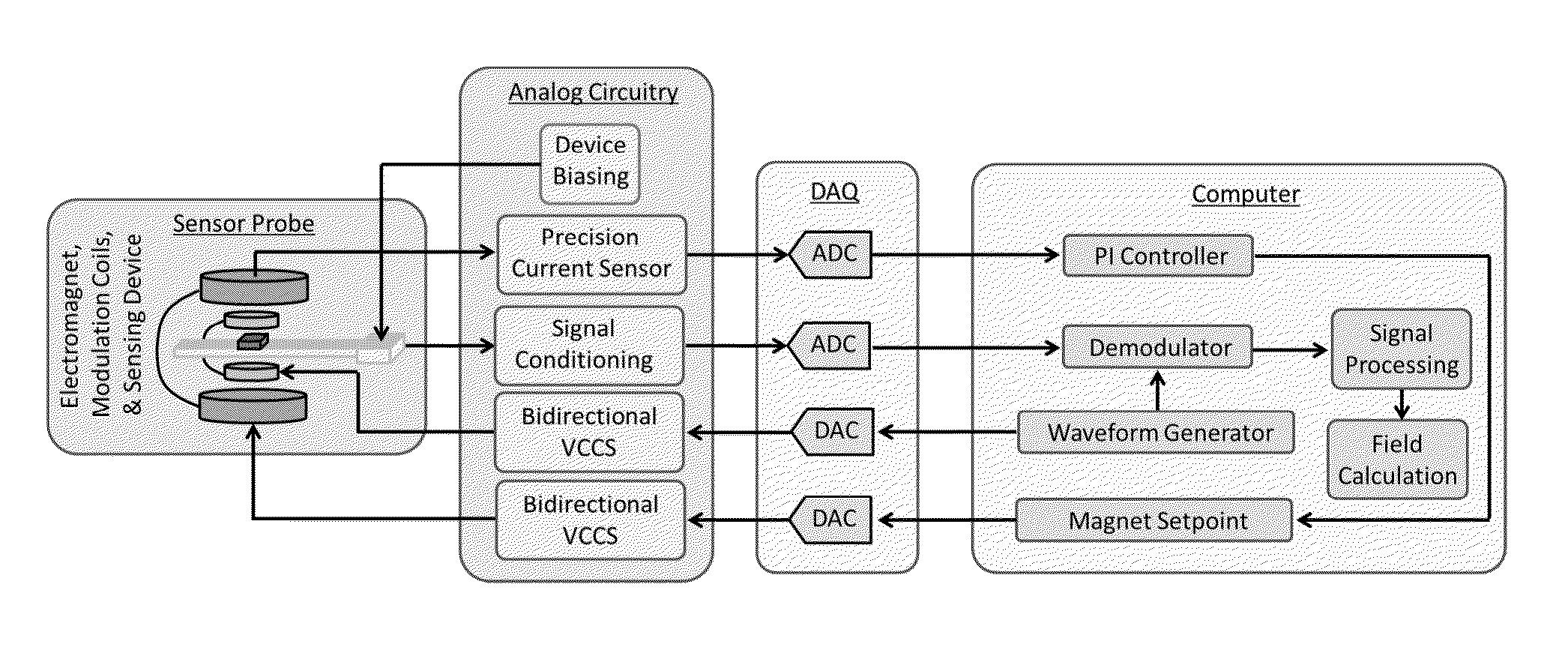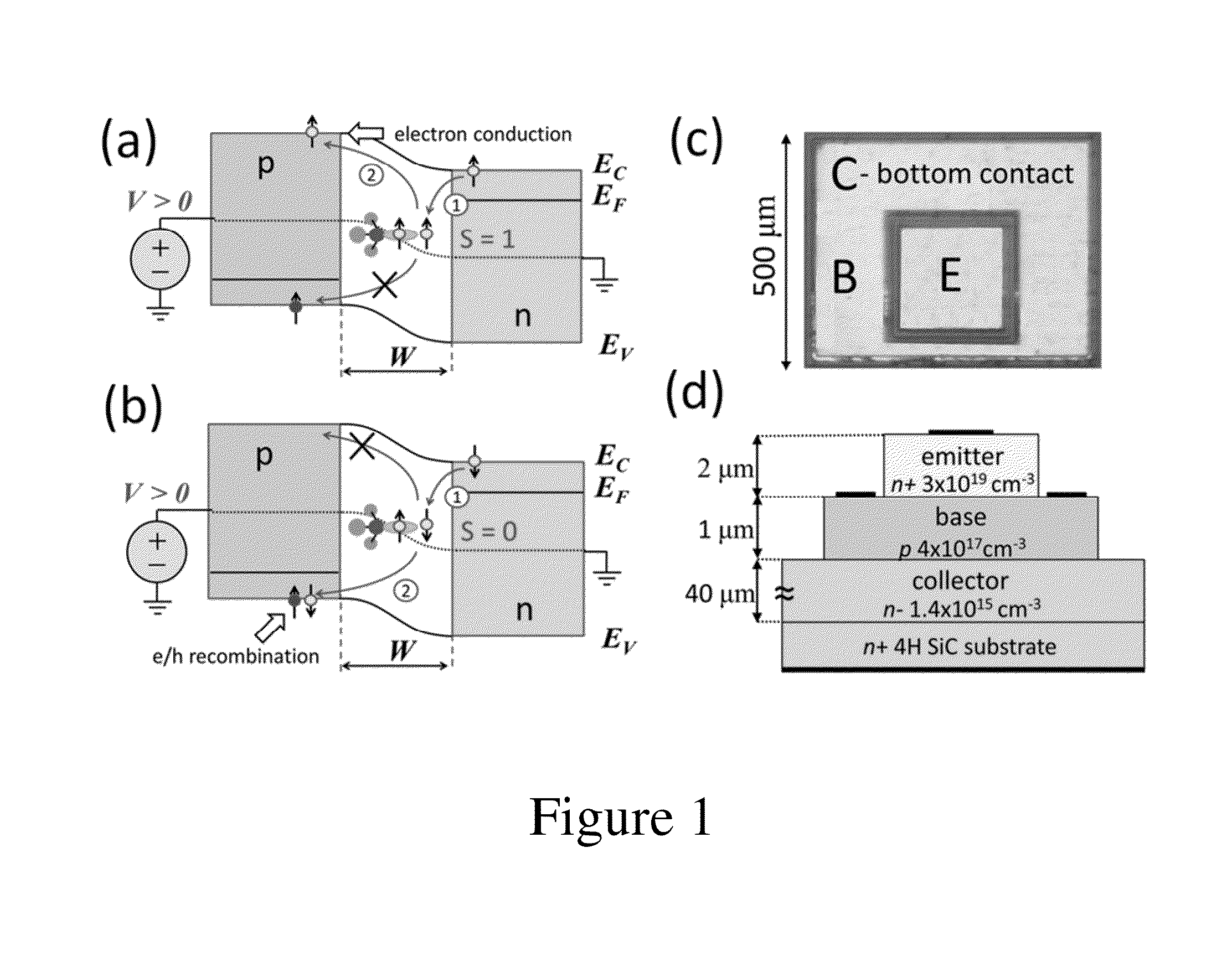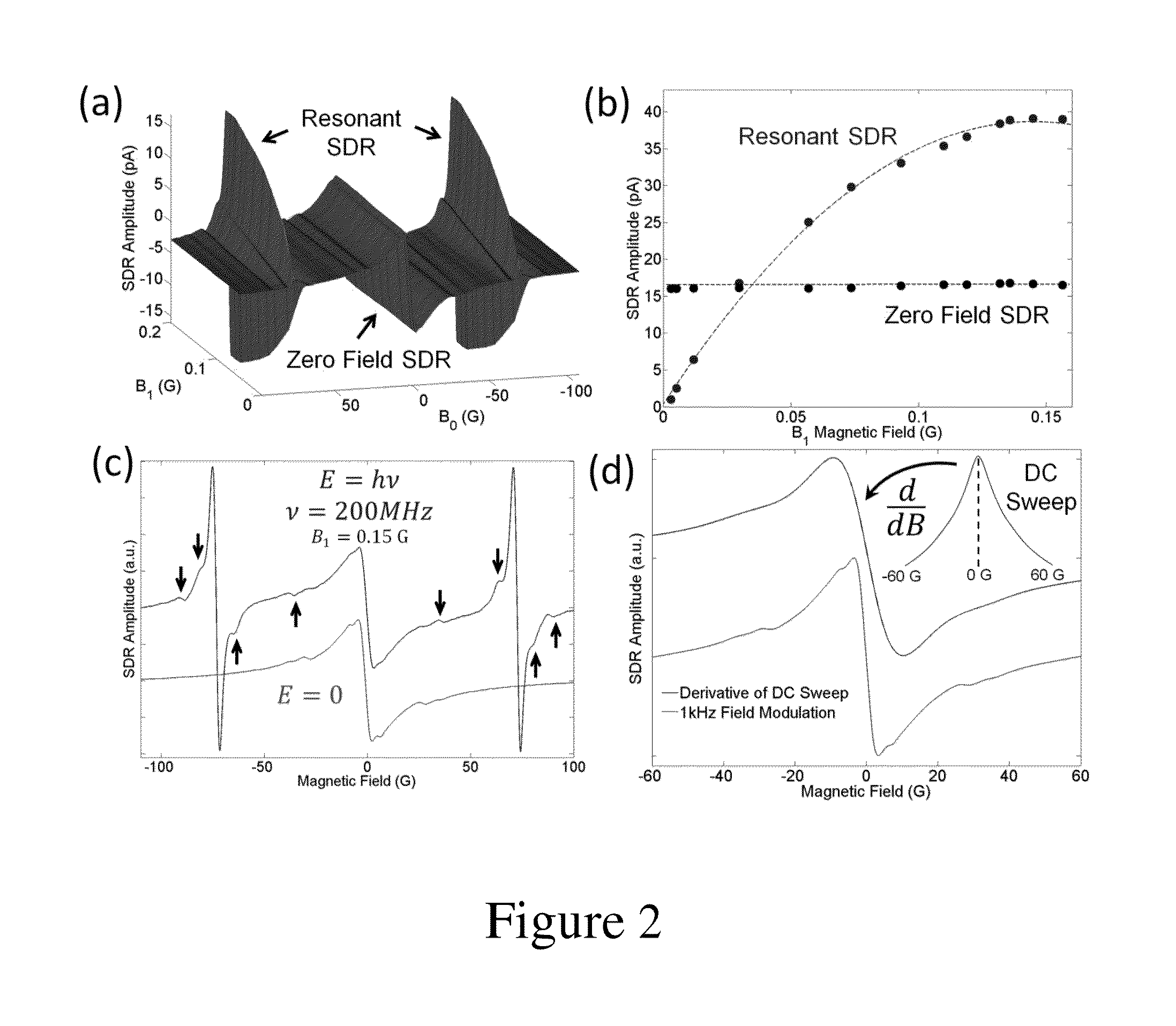Zero- & Low-Field Transport Detection System
a detection system and low-field technology, applied in wave based measurement systems, instruments, reradiation, etc., can solve the problems of low precision, at least in comparison with the highest precision systems, and achieve the effect of increasing the analytical power of the invention and significant use potential
- Summary
- Abstract
- Description
- Claims
- Application Information
AI Technical Summary
Benefits of technology
Problems solved by technology
Method used
Image
Examples
Embodiment Construction
[0035]Electrically detected magnetic resonance (EDMR) is an electron paramagnetic resonance (EPR) technique that allows the study of atomic scale defect centers and electronic transport mechanisms in micro- and nano-electronics such as recombination, scattering, hopping, and tunneling. EDMR's sensitivity is many orders of magnitude greater than EPR; yet it retains the analytical power of the conventional technique. In EDMR via spin dependent recombination (SDR), a conduction electron or valence band hole can be trapped by a paramagnetic defect in which they are in close enough proximity to form an intermediate spin pair state. The basis states of these formed pairs will consist of either the symmetric triplet states T+=↑↑, T0=(↑↓+↓↑) / √{square root over (2)}, T_=↓↓, each having spin angular momentum S=1 or the anti-symmetric singlet state, S0=(↑↓−↓↑) / √{square root over (2)} which has a spin angular momentum S=0. (The arrows in this case indicate the orientation of the spins.) If spin...
PUM
 Login to View More
Login to View More Abstract
Description
Claims
Application Information
 Login to View More
Login to View More - R&D
- Intellectual Property
- Life Sciences
- Materials
- Tech Scout
- Unparalleled Data Quality
- Higher Quality Content
- 60% Fewer Hallucinations
Browse by: Latest US Patents, China's latest patents, Technical Efficacy Thesaurus, Application Domain, Technology Topic, Popular Technical Reports.
© 2025 PatSnap. All rights reserved.Legal|Privacy policy|Modern Slavery Act Transparency Statement|Sitemap|About US| Contact US: help@patsnap.com



